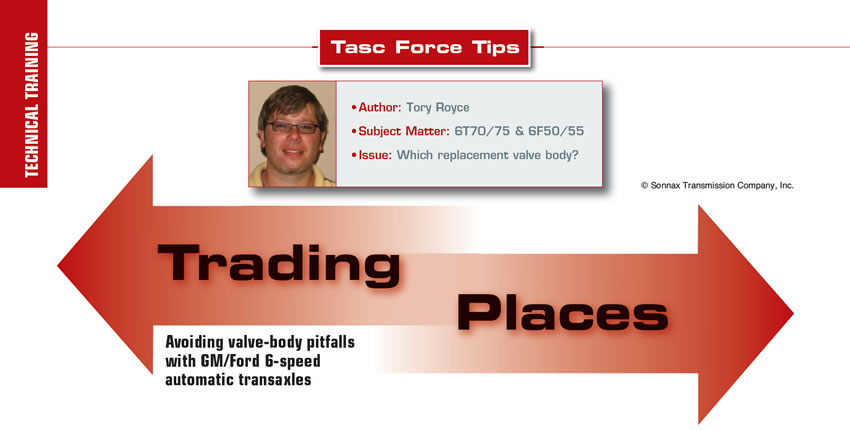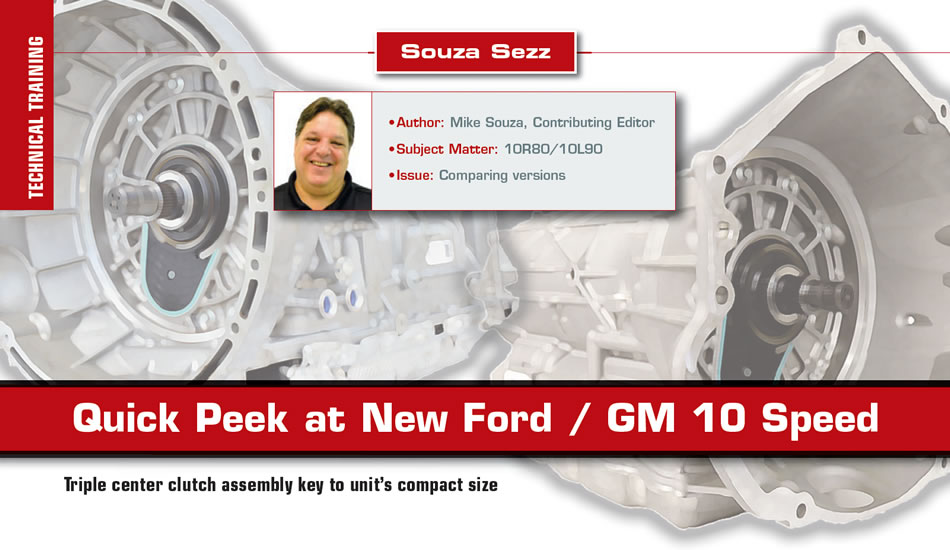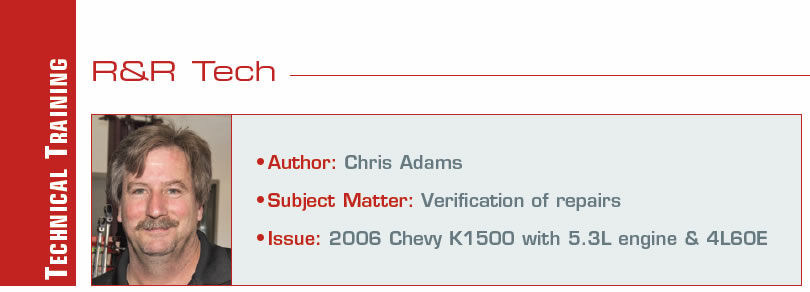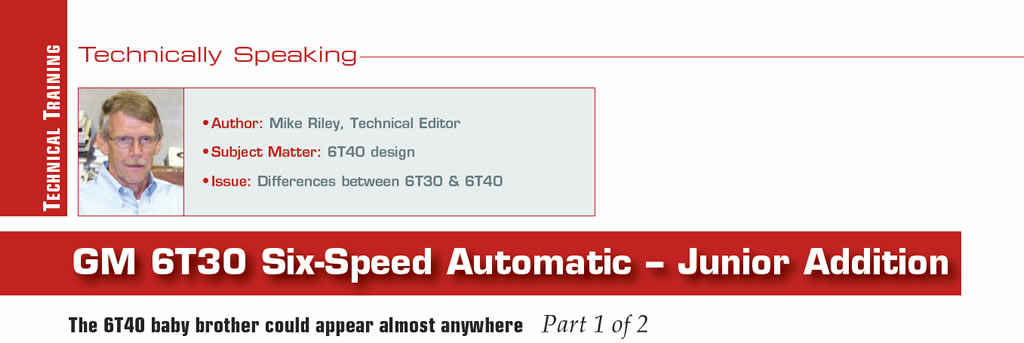Valve body – GM Gen. 2 6T70, 6T75, 6T80 – Vacuum testing
Critical Wear Areas & Vacuum Test Locations
NOTE: OE valves are shown in rest position and should be tested in rest position unless otherwise
indicated. Test locations are pointed to with an arrow. Springs are not shown for visual clarity.
A low vacuum reading indicates wear. For specific vacuum test parameters,
refer to additional information available at www.sonnax.com.

Trading Places
Most builders swapping hard parts have learned that mismatching drive components in a transverse unit will result in a host of negative consequences. The wrong ratio sprocket(s) or carrier can result in TCC and ratio codes, along with converter and unit clutch slippage. Unfortunately, optional ratios aren’t exclusive to the final drive; they can exist in the valve body as well.

Quick Peek at New Ford / GM 10 Speed
Approximately 10 years after Ford and General Motors joined together to develop a six-speed front-wheel-drive transmission, they have done it again, developing a 10-speed rear-wheel-drive transmission.

‘Yaw’ Making Us Chase Our Tails
The vehicle is a 2012 GMC Acadia with a 6T70 that has 85,000 miles on it. It comes to us from a dealer, and it belongs to a dealer employee’s relative. What difference does who owns it make? Bear with me, it all comes together to create a nightmare.

Remembering Your ‘A’ Game
A 2003 Saturn L300 came in with CAN BUS communication problems producing codes U1000 and a U2105 (Figure 1). U1000 is a Class II Data Link code. One explanation given for this code by GM is that should this code be set in history with other DTCs set in “current or history,” to diagnose these codes or code first. This means DTC U2105 could be the cause of code U1000 and will need to be diagnosed and resolved first. It is learned that code U2105 will set if the BCM or TCM lost CAN communications with the ECM.

Blame it on Missing Harness Retaining Clips
The subject vehicle that was fitted with one of our remanufactured transmissions six months prior showed up at one of our repair locations recently, with the customer concern of an intermittent bumpy 1-2 shift, and a low-power lugging sensation along with a CEL on. While performing our initial evaluation, we found a P1860 code stored in history, but not current. During the road test the truck was working well with no clear signs of what set the DTC, but after several minutes of driving it started to act up. The TCC was applying right on top of the 1-2 shift, but according to the scan-tool data, was not being commanded on by the ECU.

Give ’Em an Upgrade
This half-ton carryall came to us with an illuminated malfunction indicator light (MIL), accompanied by P0300 (random misfire) and P0304 (cylinder 4 misfire) codes. During our test drive, the MIL also flashed.
With 180,000 miles, a plethora of possibilities existed for the root cause, so I began with a GM original: the Strategy-Based Diagnostic Chart.

Use TSB’s in Your Diagnostic Routine
When diagnosing today’s complex vehicles, we have a wealth of information at our disposal. How we use that information is crucial in making the correct diagnosis the first time, every time. In some cases the diagnosis may be cut and dry (fluid is burnt, the pump is whining, and the vehicle will not move). In other cases, the diagnosis may not be as easy, or worse; we may “think” or “assume” we already know the problem.

Surprise! Get the Right Tool for This Job
With the challenges we face with today’s cars, unexpected surprises are not usually welcomed to the party. It’s a Friday night and you’re staying late to rebuild a 4L60-E from a 2010 4.8L Silverado that must go Saturday morning. So you go to have a bite to eat first. When you return, the shop is nice and quiet. You are alone and thinking to yourself, I could bang this out in a few hours and still be home in enough time to watch a show.

Verifying Repairs: This is Where We Dropped the Ball
For this installment of R&R Tech I would like to take some time to discuss how engine performance can affect the transmission operation. We have all heard it before; the engine must be running properly in order for the transmission to function correctly. What does “properly” mean in this scenario? We all use different terms when we tell the customer, “You need to get the engine running properly” or good, correct, better, whatever terms we use; in our minds it all means the same thing.

Understanding 4L80-E Overdrive Clutch Failure
Wintertime typically equals a parking lot full of snowplow trucks. Sometimes they represent repeat business — of the bad kind — but most of the time, new work.

GM 6T30 Six-Speed Automatic – Junior Addition – Part 1
During development, the GM 6T70 and Ford 6F50 basically fell off the same sheet of paper resulting in a noticeable amount of interchangeability of various components. One key difference between the two models is that GM chose to go with a mechatronic (TEHCM) valve body design, whereas Ford stuck with the traditional external TCM (PCM). Another variable between the GM and Ford transmissions were the dreaded cushion springs that have been tweaked over the years. Both designs accommodate the larger vehicles equipped with higher output engines and both have received continuous changes and upgrades.

